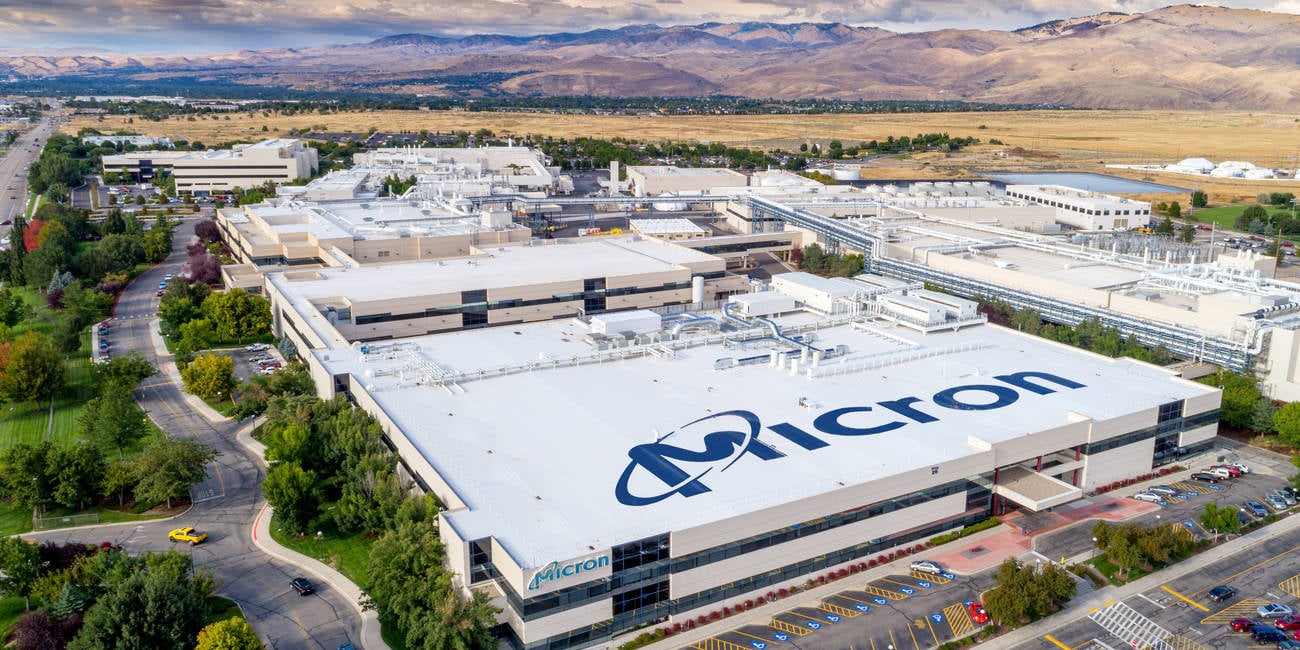Memory-maker Micron Predicts New Wave Of Server Consolidation

Micron has told investors it expects a new round of server consolidation to add to its already strong growth.
The memory giant on Wednesday announced its Q4 FY 2024 results, which saw revenue of $7.75 billion – up 93 percent year over year – and net income of $887 million. Full year revenue of $25.1 billion was $9.5 billion up from the prior year, and net income improved from last year's $5.9 billion loss to $778 million of black ink.
It's 2024, so it will not surprise that president and CEO Sanjay Mehrotra attributed some of its sales spike to demand for memory-hungry AI servers. He also had the pleasant duty of reminding investors that Micron has already sold all the high-bandwidth memory (HBM) it plans to make this year and next, and assured that the biz has taken steps to ensure its manufacturing operations can meet demand.
Mehrotra predicted datacenter demand will remain strong in 2025 – helped by low-single-digit percentage range growth for traditional servers.
"We expect traditional server demand to benefit from a refresh cycle, as a single latest-generation traditional server can replace multiple older-generation servers to provide valuable space, power and performance improvements to improve datacenter efficiency," Mehrotra explained.
That's a reference to the forthcoming release of next-gen datacenter CPUs from Intel and AMD, which will bring hundreds of cores to servers in 2025. Both chipmakers have predicted their manycore offerings will spark a new wave of server consolidation, and Mehrotra appears to agree.
Micron wins in any event. "We see increasing DRAM and NAND content both in traditional as well as AI servers," Mehrotra noted in prepared remarks.
The CEO was also upbeat about the AI PC, saying manufacturers have started buying memory already, because they fear having to compete with datacenter buyers. AI PCs also need more memory and storage.
"Leading PC OEMs have recently announced AI-enabled PCs with a minimum of 16GB of DRAM for the value segment and between 32GB to 64GB for the mid and premium segments, versus an average content across all PCs of around 12GB last year," Mehrotra revealed. The CEO also pointed to AI-enabled smartphones currently shipping with 12GB to 16GB of DRAM, compared to an average of 8GB in flagship phones last year.
- Micron mega-fab mildly endangered by definitely endangered American bats
- Micron told to pay $445M in memory patent infringement case
- Intel nabs Micron exec to oversee foundry business ambitions
- Lenovo and Micron first to implement LPCAMM2 in laptop
Mehrotra told investors Micron's new manufacturing process – 1-gamma, which works at 10nm – is on track to produce product in 2025, and its 1-beta DRAM and G8 and G9 NAND nodes are ramping in high volume and "will become an increasing portion of our mix through fiscal 2025." That G8 node produces 232-layer NAND.
Execs didn't mention Micron's troubles in China, where it was banned for vague reasons. The surge in revenue perhaps rendered that matter irrelevant. China was mentioned in the context of work to expand a factory in Xi'an, which is apparently going well. So is construction of an assembly and test facility in India. Mehrotra also reported "progress on the construction for our new fab in Idaho" and on obtaining permits to build another facility in New York state.
Guidance for Q1 2025 was for $8.7 billion, plus or minus $200 million – which would represent a $4 billion increase on Q1 2024 revenue. No wonder Micron's share price popped from around $95 to almost $110 in after-hours trading. ®
From Chip War To Cloud War: The Next Frontier In Global Tech Competition
The global chip war, characterized by intense competition among nations and corporations for supremacy in semiconductor ... Read more
The High Stakes Of Tech Regulation: Security Risks And Market Dynamics
The influence of tech giants in the global economy continues to grow, raising crucial questions about how to balance sec... Read more
The Tyranny Of Instagram Interiors: Why It's Time To Break Free From Algorithm-Driven Aesthetics
Instagram has become a dominant force in shaping interior design trends, offering a seemingly endless stream of inspirat... Read more
The Data Crunch In AI: Strategies For Sustainability
Exploring solutions to the imminent exhaustion of internet data for AI training.As the artificial intelligence (AI) indu... Read more
Google Abandons Four-Year Effort To Remove Cookies From Chrome Browser
After four years of dedicated effort, Google has decided to abandon its plan to remove third-party cookies from its Chro... Read more
LinkedIn Embraces AI And Gamification To Drive User Engagement And Revenue
In an effort to tackle slowing revenue growth and enhance user engagement, LinkedIn is turning to artificial intelligenc... Read more

